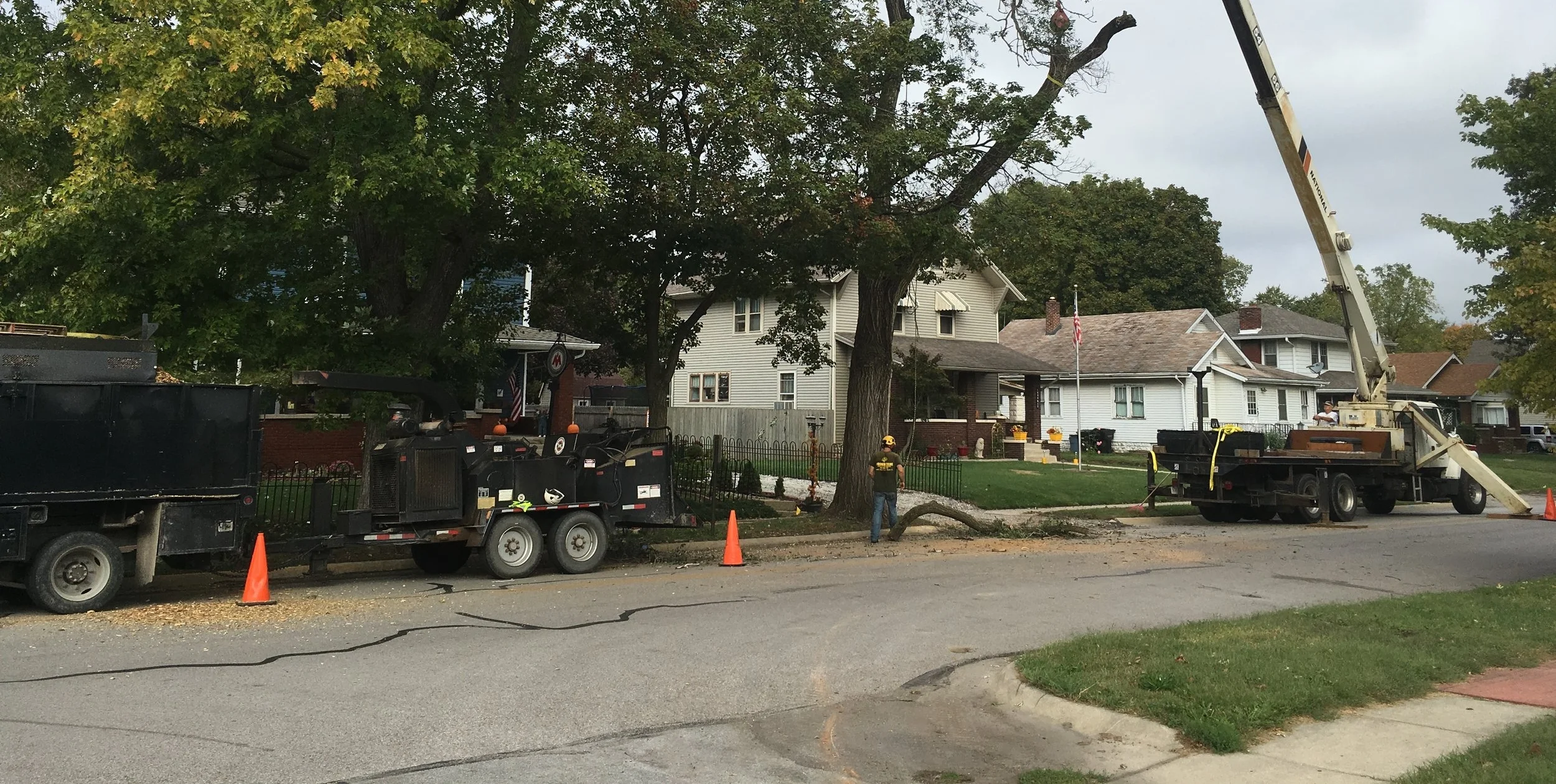Winterize Your Trees
/Article by Purdue Extension
"As trees in our urban and suburban landscapes prepare for winter dormancy and cold, they could use a little extra care from you to ensure a good start in the spring. As the seasons change, trees prepare to overwinter in a dormant state. Dormancy is not death; it is a natural state in which trees prepare and adapt to cold conditions with physiological and structural adjustments. Even though the leaves are changing colors and falling to the ground, trees are still active, making necessary preparations for winter. Winter conditions will make finding moisture a challenge—and keeping plant cells hydrated in winter is critical for survival. Potential sources of winter water include unfrozen soil; internal reservoirs; and the area above the ground, but just under the snow cover (the subnivean zone). If trees cannot find needed water in these areas, expect poor health and growth the following spring.
Summer and fall drought conditions can place trees in an overall water deficit, predisposing them to pest issues and poor health the next growing season. Likewise, spring and summer weather affects the trees’ ability to survive winter weather. Young or newly planted trees will require more attention because of limited abilities in obtaining water in their growing environment. The key to survival is giving trees adequate moisture before winter freezes the world around them. Good cultural practices and proper plant healthcare make a difference in how much water is available to your trees in winter and how well they survive." Tips for winter preparation include:
Trunk Wrapping
Mulching
Fertilizing
Watering
Pruning
Click here to read more information on each of these tips in the full article.










